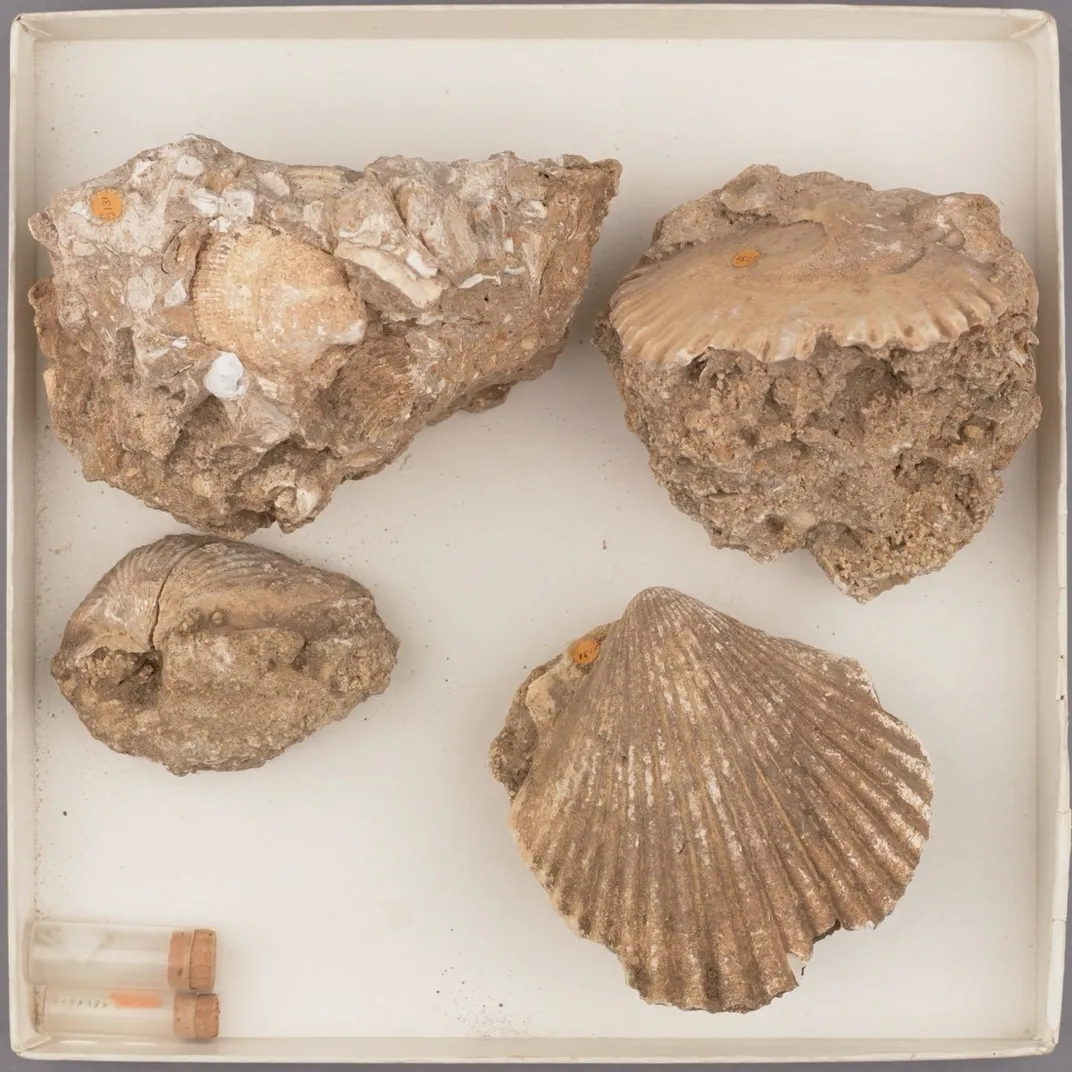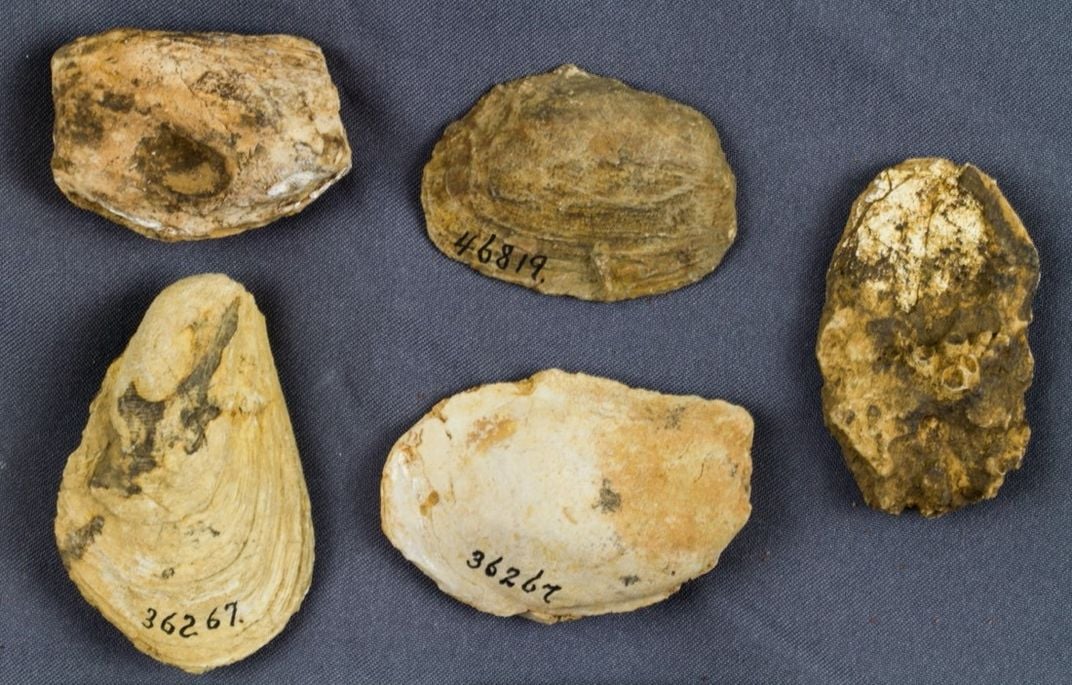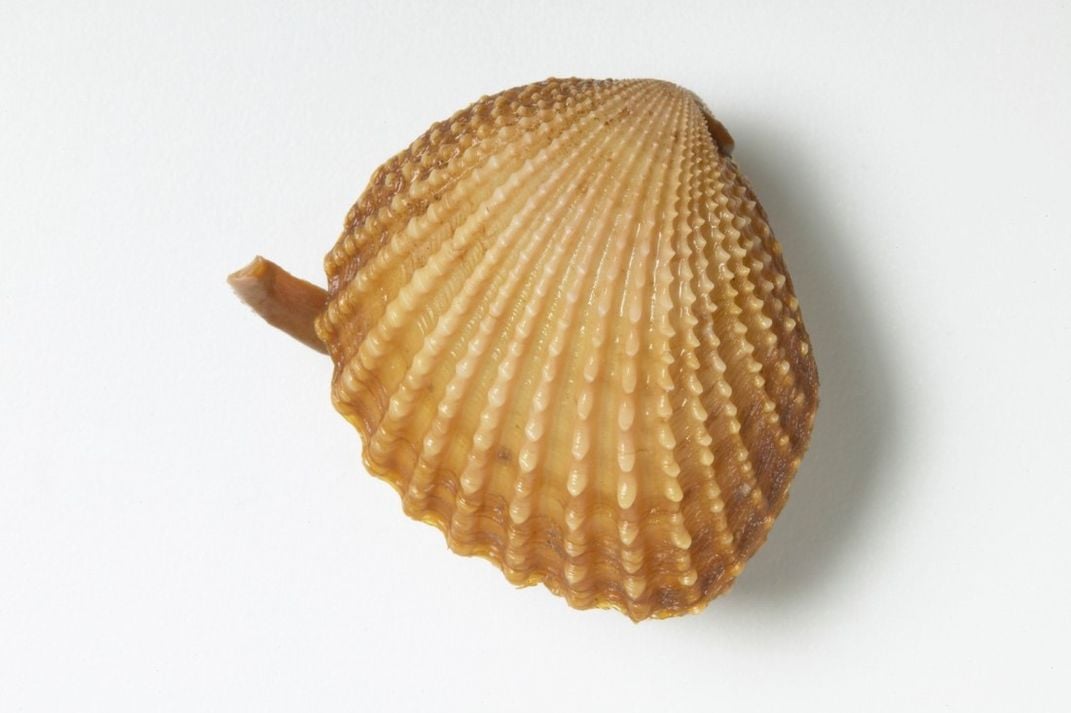NATIONAL MUSEUM OF NATURAL HISTORY
Say Hello to the Smithsonian’s Newest Mollusk Expert
Learn what the ancient history of these sea creatures could tell us about biodiversity on ancient and modern Earth.
/https://tf-cmsv2-smithsonianmag-media.s3.amazonaws.com/blogging/featured/A_person_poses_next_to_an_open_cabinet_full_of_fossil_shells..jpg)
Caring for and studying the Smithsonian's 40 million fossils would take eons without a dedicated set of scientists. Later this month, the National Museum of Natural History will welcome another scientist to its team to help them manage the collection.
Dr. Stewart Edie will be the new paleobiology curator who specializes in the evolutionary history of marine bivalves — a taxonomic clade including clams, mussels and more. In this “Meet a SI-entist,” we chat with Edie about what the ancient history of these sea creatures could tell us about biodiversity on ancient and modern Earth.
How did you find yourself studying paleontology?
I remember being pretty curious about what made all of the sights, noises and smells on the tidal flats where I grew up in the southeastern United States. I carried these questions with me into college, where I sought out intensive research experiences to answer them. I learned how paleobiology can help us understand not only the ecology of tidal flats and other ecosystems, but also how they’ve evolved and may change in the future. I was hooked.
Speaking of past life, you specialize in the history of bivalve mollusks. What clues do bivalves hold about Earth’s ecological history?
Bivalves are a class of mollusks closely related to snails, octopuses and chitons. They’re found in rivers and lakes, but most live in the ocean. Bivalves grow two hard shells that tell us a lot about the animal like how it’s related to other species, how it adapted to its habitat and even how it grew. These shells fossilize really well. So, they leave a terrific record of bivalve biodiversity going back half a billion years.
This is a really important archive to study because biodiversity is so much more than the number of species. It includes how species are phylogenetically related, how diverse they are in their body forms (or morphologies) and how different they can be ecologically. Studying these elements of biodiversity together gives us a more complete picture of how species respond to climatic and environmental changes.

For example, one of the most curious findings in the past few years for me and my collaborators explores how the dimensions of biodiversity change in time and space. Over two-thirds of bivalve genera (the plural of genus, the taxonomic rank above species) were lost through the end-Permian mass extinction around 251 million years ago and then lost again through the end-Cretaceous mass extinction around 66 million years ago.
Despite these large losses in taxonomic diversity, the number of ways in which these genera interacted with their environments virtually stayed the same. In other words, these ancient ecosystems lost genetic diversity because so many animals died out, but ecological diversity in this mollusk class didn’t crash.
This result was particularly surprising because it contrasts with what we see today. We see a 90% decline in the number of species from the tropics to the poles alongside a big decrease in ecological diversity. It’s opposite of what we found for the mass extinctions. When, where and how these different dimensions of biodiversity decouple in time and space is motivating much of the research I’ll be doing at the museum.
So, how do you do this research when your evidence comes from stationary fossils and primordial events?
The fossil record gives paleontologists access to large-scale evolutionary patterns over hundreds of millions of years. That’s a tremendous amount of data to study. But one of the biggest difficulties in using the fossil record to study evolution is that we can’t go back in time and re-run experiments. We still operate under the scientific method, just not in the way regular bench-top experiments might proceed. With thorough comparative analyses, sampling large numbers of species and comparing repeated extinctions, we can form ideas about how environmental changes and evolution have shaped biodiversity dynamics through time.
Another thing the fossil record is well-suited for is studying the evolutionary changes in the body form of animals, or their morphology. And that’s a major part of what I’m going to do at the museum in the next few years.
We can use three-dimensional scanning and machine learning to quantify changes in morphology, just like we’ve done for taxonomic and ecological diversity. Will morphological diversity crash with taxonomic diversity, or will it be stable like ecological diversity? I have a few hypotheses, but I’m excited to finally start testing them at this large, global scale.

Why is it important to study past biodiversity? Can you tell me about how this connects to deep time and why it’s important to see the world in that context?
Biodiversity is more interconnected than we might imagine at first. It’s not just isolated units moving independently though time and space. If one part of the system is disturbed, we need to know how much that affects other parts of the system. That’s something the fossil record can help us with.
The environmental crises faced by today’s biodiversity are not perfectly replicated in the fossil record. But this is why I study all of those dimensions of biodiversity. While the players in those mass extinctions I study are different from the taxa we have today, we can still investigate in general how extinctions remove large amounts of taxonomic diversity and leave ecological diversity unchanged. Then we can ask, are any of those same mechanisms ongoing today?
What are your favorite bivalves?
It’s pretty tough to pick one. Some have incredible lifespans and can live up to half a millennium. Some produce silk-like thread. Some can cement themselves to rock underwater, that’s impressively resourceful.
But my favorite bivalve, at least for right now, has more to do with its story of discovery than its ecological skills — although the way they jump is rather impressive. Species in the family Trigoniidae were found throughout the oceans during the time of dinosaurs. It seemed like the same mass extinction that took out the dinosaurs claimed this mollusk too.
But at the turn of 19th century, a naturalist found shells of the genus Neotrigonia that appeared to be from recently dead individuals. A few years later, a couple of determined French naturalists finally found a live individual. I absolutely love that story of discovering an organism we thought was extinct.

This discovery really matters from a scientific perspective, too. What was once a global and thriving lineage in the Mesozoic seas hadn’t gone extinct, but rather retreated to a tiny part of the present-day ocean off South Australia. Understanding what led to this diversity collapse and how this family ultimately persisted can tell us a lot about how similar, seemingly dominant lineages in today’s ocean may respond to ongoing and impending changes to the biosphere.
What excites you most about your research?
It’s thrilling just to follow curiosity. Asking new questions and then trying to answer them brings me closer to an understanding of how the biological world works. I get goosebumps when I see new data because it’s an opportunity to fit another piece into the puzzle. Being a paleontologist is a bit like being a historian of biology, and there’s a tremendous amount we can learn from the past.
But perhaps most importantly, I really look forward to sharing this work with the many visitors to the museum, and to encourage them to do science and think like a scientist, because they absolutely can.
Meet a SI-entist: The Smithsonian is so much more than its world-renowned exhibits and artifacts. It is a hub of scientific exploration for hundreds of researchers from around the world. Once a month, we’ll introduce you to a Smithsonian Institution scientist (or SI-entist) and the fascinating work they do behind the scenes at the National Museum of Natural History.
Related Stories:
Interdisciplinary Study Shows How Species Interactions Affect Evolution
Meet the Scientist Using Fossils to Predict Future Extinctions
Get to Know the Scientist Reconstructing Past Ocean Temperatures
Meet the Scientist Studying How Organisms Become Fossils
Here's How Scientists Reconstruct Earth's Past Climates

